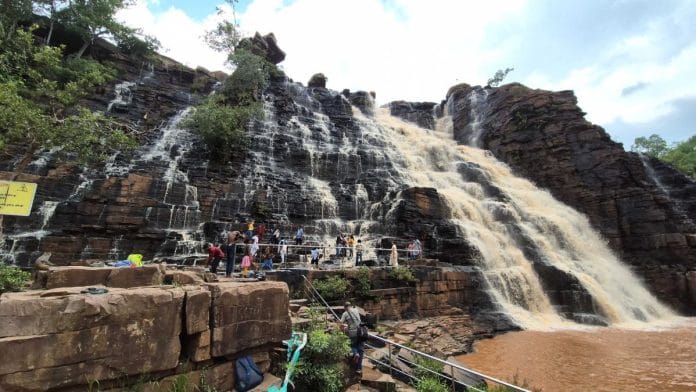Bastar: Right in the middle of Jagdalpur is the former outpost of Special Task Force Unit Snake Charmers. It was a functioning camp called Indravati until 2022, with gunmen standing guard against the Naxals at all times. But now it’s a tourist resort.
With the red corridor blanket lifting, it is revealing the green cover underneath—a magnet for curious visitors from across the country. It’s a massive makeover that nobody even imagined a decade ago. It was a Naxalite hotbed. Manmohan Singh called it the greatest internal security threat. Every security meeting in New Delhi debated how to stamp it out. Should the Army be sent in, like in Kashmir? Should drones be used?
Today, Bastar is a reels, rock music and river paradise. There are ancient temples to see and caves to explore.
According to government data, Bastar has seen a 40-fold increase in tourists. In 2021, a little more than a lakh people visited the region. That number crossed 40 lakh in 2024. By April 2025, 15 lakh people had already visited.
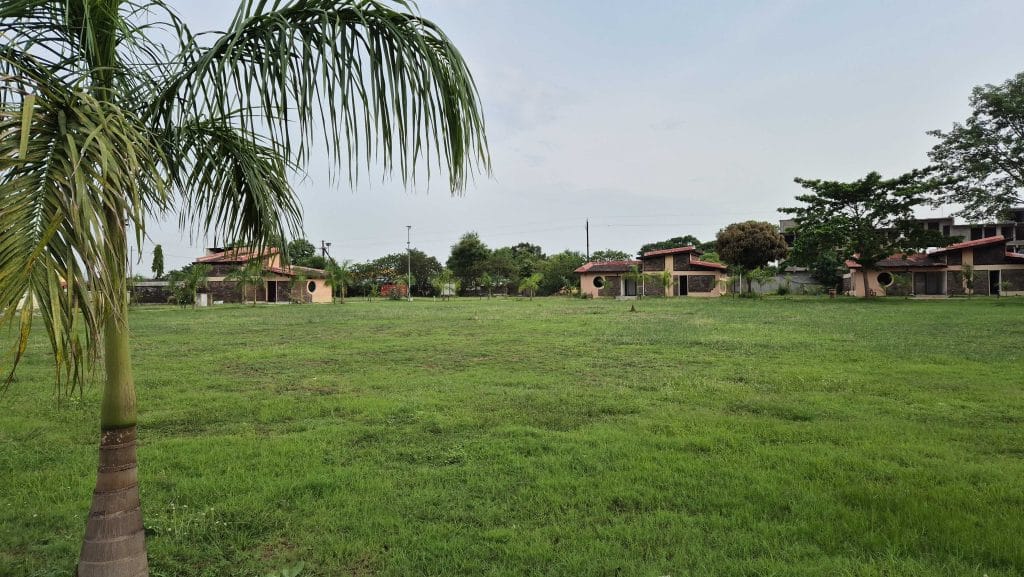
Jagdalpur and the surrounding areas of Bastar are fast emerging as tourist spots. Educated young Bastariyas are returning to become part of the region’s growth story. The influx of tourists, as well as the export of Bastar’s culture supported by government initiatives, shows the desire of the youth to dissipate the fog of Naxalism and the danger that defines the conflict-torn region in popular imagination.
The region was put on the global tourist map by United Nations Tourism in 2024. Dudhmaras village in Kanger Valley National Park was picked to be part of the UN’s rural tourism development programme. Under the small grants programme, the village is set to receive support for tourism infrastructure. Cultural export has also begun—western fusion Bastariya folk songs are playing across cafes in the country. Even a ‘Bastar Olympics’ is being planned for 2026, at a cost of Rs 5 crore.
Bastar’s youth are gearing up for a more promising, idyllic future, while they remain extremely conscious of preserving local heritage and nature.
“Bastar’s identity is undergoing a significant and positive transformation. Once known primarily for conflict, Bastar is now being recognised for its natural beauty, rich culture, and progress. The influence of Maoist groups has been greatly reduced, and the region is writing a new story of peace and development,” Chief Minister Vishnu Deo Sai told ThePrint.
The centre’s focus on eliminating Naxalism from the state by March 2026 has kept the state government on its toes. This meant that the state budget’s central focus was on development work in Bastar, all wrapped up with a catchy slogan—‘Viksit Bastar Ki Ore’.
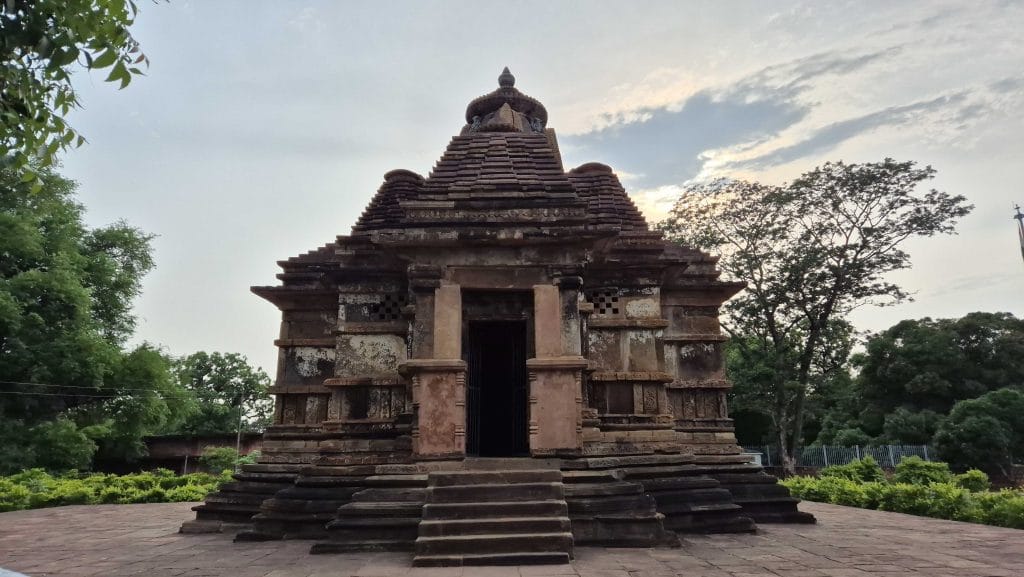
The magic of Bastar
Jagdalpur District Magistrate Rajat Bansal was hell bent on empowering the district’s cultural exchange. He wanted to reach the dizzying heights of music fame—record a Coke Studio song infused with Bastar’s folk music. What came of that ambition was a sensational EP—Jadoo Bastar—which has taken India by storm.
Anurag Jose, a Jagdalpur-based guitarist, was psyched when his favourite Indie band Daira came to Jagdalpur in 2022. The band met local artists, including Jose, during the Bastar Music Festival and then began five days of jamming and brainstorming. They selected five folk songs on themes of friendship, belongingness, ambition and released an EP titled Jadoo Bastar. It featured elements of Bastar folk music and Western rock. Released in 2024, the songs have garnered millions of views on YouTube.
Jose has been getting phone calls and messages from friends all over the country talking about the album. For him, music is a cultural export. It has the potential to radically shift the perception of Bastar in popular imagination.
“Jaadoo Bastar is easily the most significant chapter in the 10 years of Daira’s existence. Through the EP, we explored the unimaginable talent and rich heritage that exists in Bastar,” said a spokesperson for Daira.
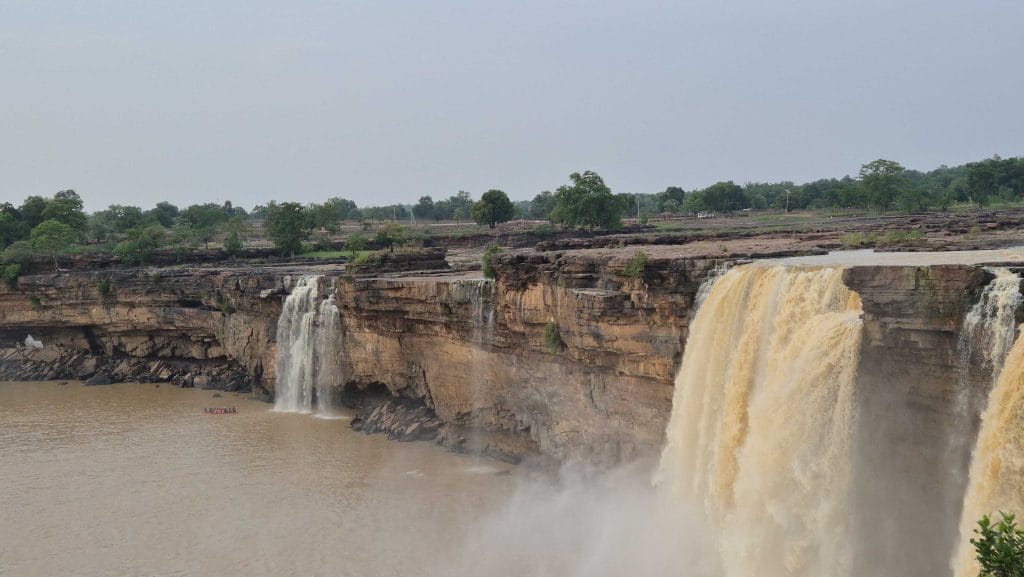
“Tribal folk music’s structure has now met world music. One album has five different kinds of genres like psychedelic rock, soft rock… this is a mixture that has a large sonic potential,” Jose said, while excitedly talking about how his friends in different cities are blasting this music in their cars.
These friends now want to visit his hometown. “Earlier, they associated Bastar with only Naxalism… but through these songs, people have now understood Bastar,” he said.
The most popular song in the album is Bailadila, clocking over 2 million views on YouTube. The tribal folk song is a description of Bastar’s beauty and is sung for the EP by Lakeshwar Khudaram. In their version, Daira adds a Hindi verse which tells the story of a young Bastar man who moves to the big city to make a name but misses the magic of Bastar.
Khudaram sings on a quick beat, much like a rap. “In Halbi and other languages, we’re used to singing in quick progression. This is our way of singing,” he said.
He and his fellow folk musicians have been working to spread Bastar’s music in Chhattisgarh, and have so far released a few songs on hyperlocal radio stations. But this was the first time that the 60-year-old worked on an EP.
“This is just the beginning. We [folk musicians] are still trying to figure out how to promote Bastar’s music outside the region. These folk songs, which are endangered, can only be rescued by spreading them, preserving them, and teaching them to the next generation,” Khudaram said.
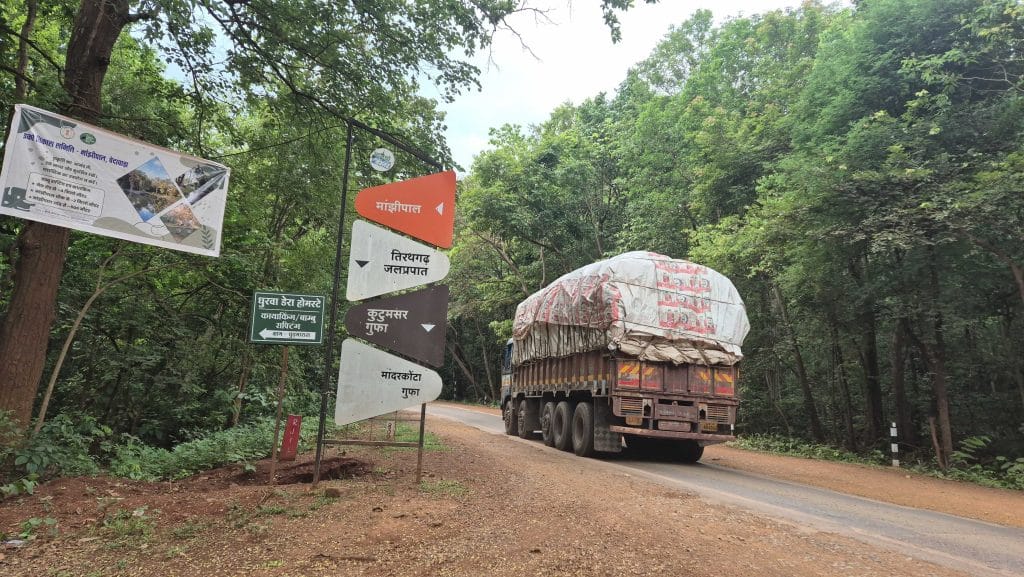
Inviting tourists home
Maan Singh Baghel has grown up with a rather heavy burden on his shoulders. The first college graduate from his small, unsurveyed hamlet located in Kanger Valley National Park, Baghel felt a sense of duty towards his fellow villagers. The 32-year-old wanted to improve their lives.
His journey began in 2016, when he learned of homestays as a way of economic empowerment. All one needed to do was host tourists at their home. He got to work and built a small room in the middle of an open field outside his house, and put up the Durwa Home Stay signboard. But it would take close to a decade for him to open for business, in 2024.
“Tourists used to visit our village and inquire about a place to stay. They had to turn back disappointed. Villagers also didn’t have a very inviting view of tourists. I had to change that. I told them that it is good for our economic empowerment. And slowly things have changed,” he said.
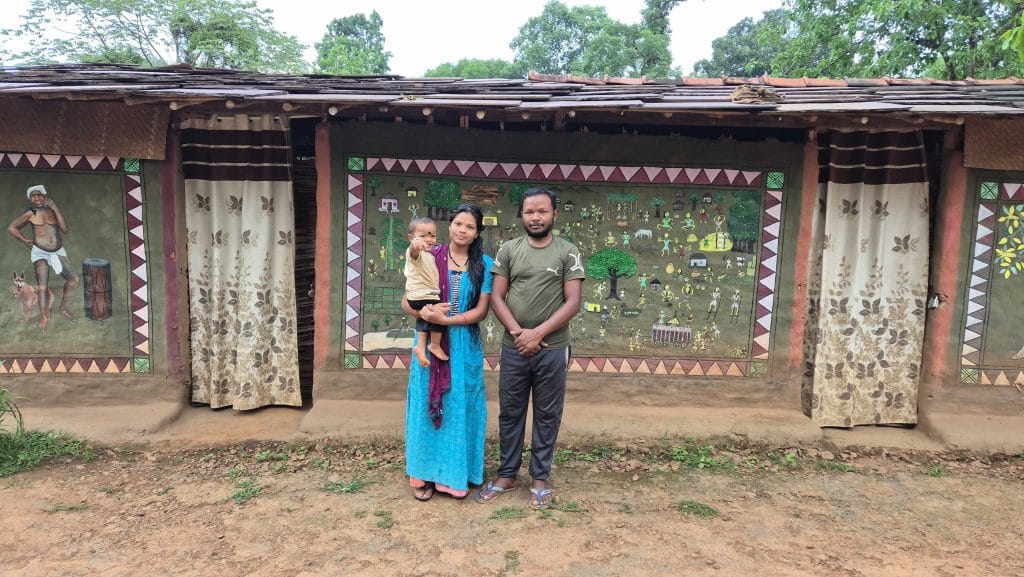
The forest department encouraged Baghel to open his homestay. The government is actively encouraging others to open homestays in tourist spots through a rural homestay policy.
“Besides enhancing infrastructure and accessibility, while preserving Bastar’s unique culture and biodiversity, we are also working on a new homestay policy to encourage authentic rural tourism and create steady earnings for local families. We are also partnering with private agencies to improve digital visibility and mapping of tourist sites, and promoting Bastar’s attractions globally,” CM Deo said.
In 2023, Baghel opened three new rooms in his fields, which can be booked via phone calls. Business boomed last year, when every week in the winter months saw five to six bookings.
More business is anticipated as the United Nations has put his village, Dudhmaras, on the global tourist map. Adventure tourism in the Kanger River, which flows near the village, is also an upcoming economic opportunity.
Apart from these attractions, there are the Kotumsar, Kailash, and Dandak caves, Tirathgarh Waterfall, and Bhainsa Darha. Baghel doubles up as a guide for his guests as well.
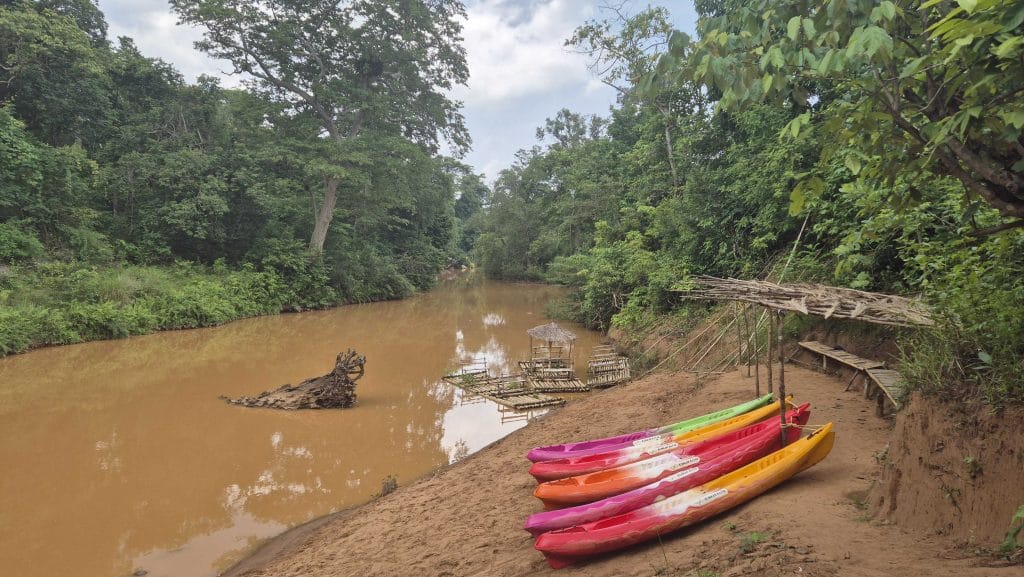
The boost in tourism is helping village youth find employment at home. They don’t need to migrate to nearby states like Maharashtra, Telangana, or Goa in search of work, as they previously did.
One of the beneficiaries of this surge is Samnath Nayak. The 27-year-old has built bamboo rafts to ferry tourists on the Kanger. He started this business in December 2024.
“We [boatmen] bought bamboo ourselves and then built these rafts. We had seen them at a nearby village, Durga Dera, where tourists used to come,” he said.
Nayak said the rafts cater to the almost 20 cars full of tourists visiting his village every weekend.
“I am really happy with the business, because it allows me to stay at home. Women in the village also set up shops and sell forest produce to tourists here,” Nayak added.
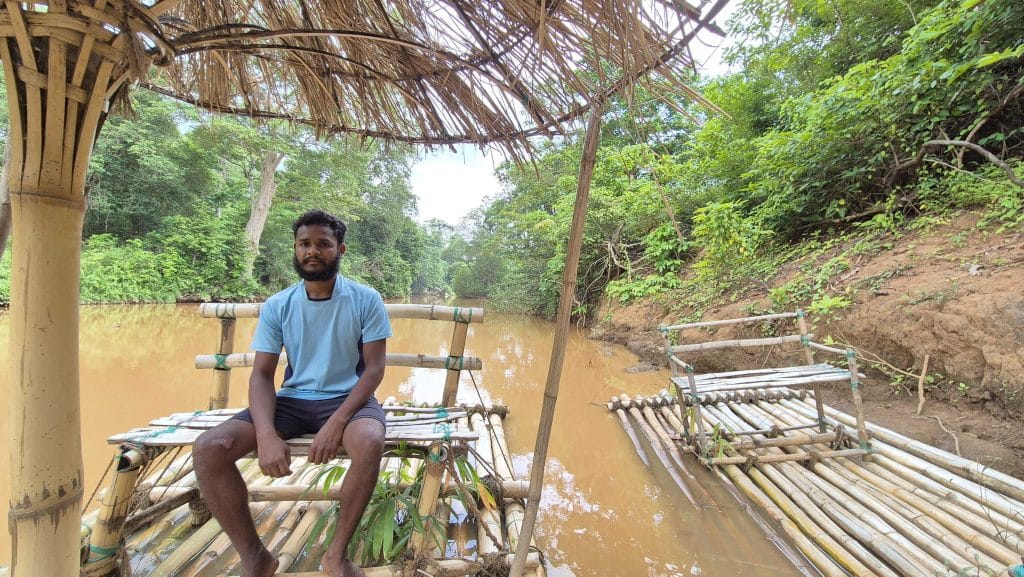
Sustainable tourism
Tourism here is at a very nascent stage, with hotels, resorts, and cafes taking shape only over the last two to three years. But that’s what makes the place special: The forest still dominates the landscape.
By nightfall, the sound of crickets takes over instead of loud music. Plastic pollution is still limited, and there are no Maggi points to be seen. Instead, tribal women have set up stalls serving mango chaat and bread pakoras.
Local people are extremely conscious of the fact that unchecked commercial tourism can radically disrupt the thriving ecosystem. A community-led tourism model is their priority. They want to ensure that tourism empowers the communities in Bastar. They also keep a close eye on preventing plastic pollution.
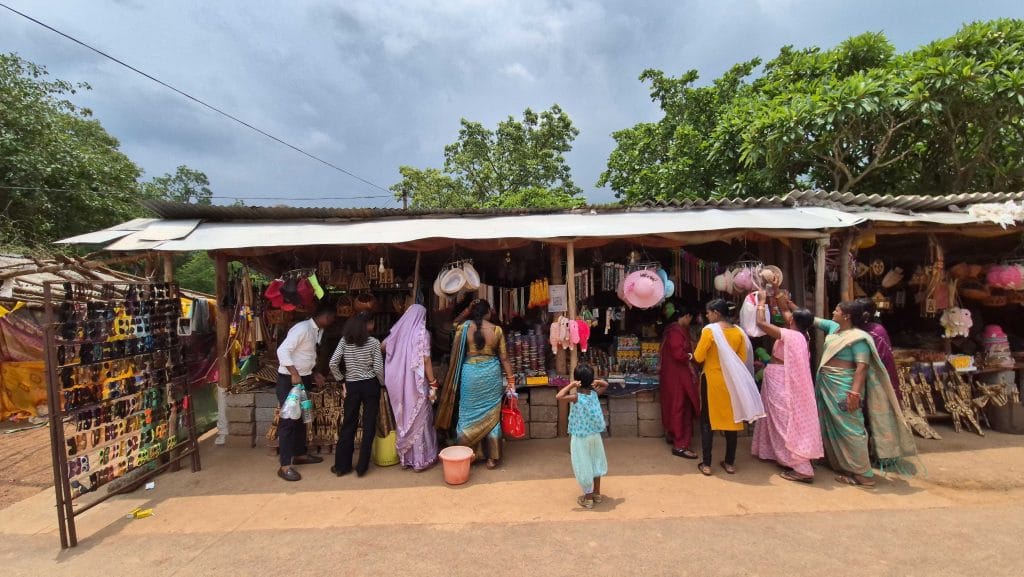
At Teerathgarh Waterfall, which has been a tourist destination since 2003, gram panchayat members are stationed at various points to ensure that people don’t litter. They check tourists’ bags and don’t allow any plastic bottles or wrappers to be taken to the waterfall.
Their work is funded by a Rs 30 fee that is taken from every car that visits the area.
At the helm of this community-based tourism is Jeet Singh Arya, the founder of Unexplored Bastar, a community-based travel company. Arya started Unexplored Bastar in 2016 and has since worked with local communities, as well as the government, to ensure that a vibrant and integrated tourism model is encouraged in the region.
“When I was pursuing an MBA in Gurugram, I found that people had a very negative perception of Bastar. To change that, I created a Facebook page in 2010. It became a company in 2016. Being a local Bastariya, I wanted to come back and contribute to my land. I saw a lot of opportunities here. The place required skilled labour; I was one of those, so I returned,” Arya told ThePrint.
Arya said that tourist interest in local art and craft forms helps local communities regain their pride.
And Godna tattoos fall into this realm. In 2021, the Chhattisgarh government provided training to young tribal men and women on the traditional form of tattooing. It is with the help of this training that Dharujay Baghel became a Godna tattoo artist.
After training at the Badal school for a month, Baghel received a tattoo-making kit from the government, which helped him kickstart his business at Chitrakot Waterfall.

“Once I received the kit, I started sitting in front of the Chitrakot Waterfall and slowly invited people to get a Godna tattoo. I also learned on the job,” Baghel said.
He has now rented a small shop near the waterfall. It’s a lucrative opportunity. Even tattooing one client is enough for him to cover his rent for the month. Baghel is also proud of the fact that he can contribute towards the preservation of Godna art.
“The communities here appreciate the way tourists admire their culture. They get to feel that their culture is important to and respected by the world. People think that Bastar is unsafe, but it is not like that. Brand building will improve the image of Bastar in tourists’ minds,” he said.
Arya believes that a Meghalaya or Kerala-based approach to tourism in the area could be beneficial.
But people like Baghel want to remind tourists to be sensitive while visiting Bastar.
“It is the educated people who don’t understand the need to not spoil nature. We request them to take their plastic back to the city instead of littering it here,” Baghel said.
Tourists, in the meantime, sit in bamboo rafts, get photographed near waterfalls, and use Bailadila as the soundtrack to their reels. They’re enjoying serenity in a region they never saw as peaceful.
(Edited by Theres Sudeep)



